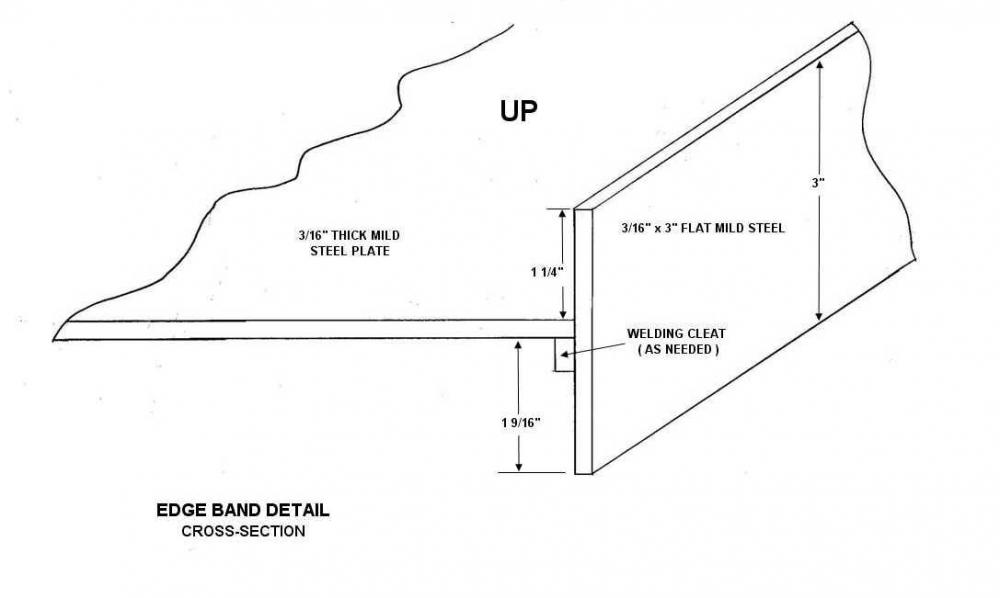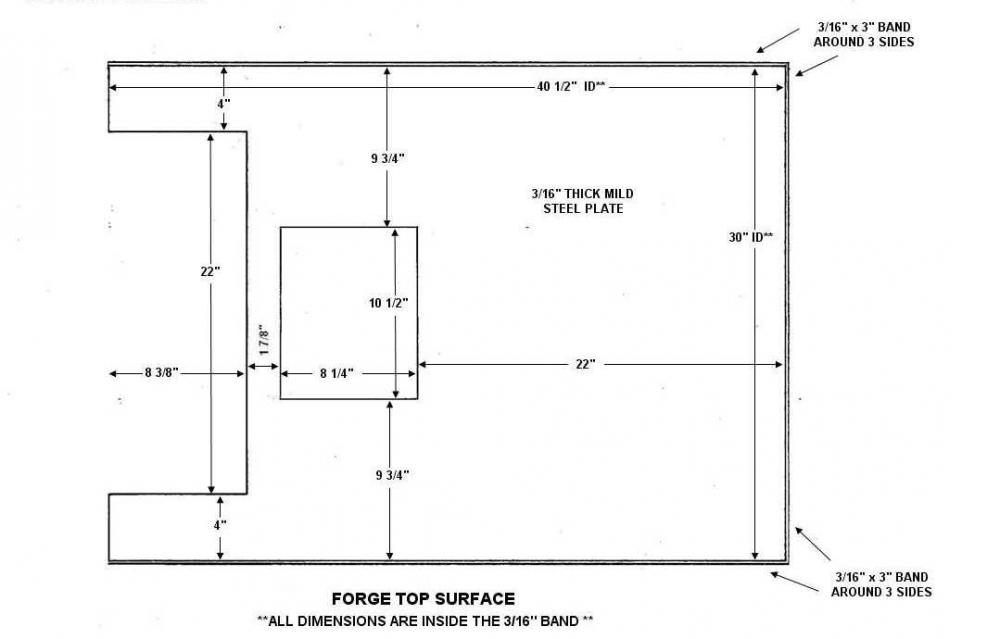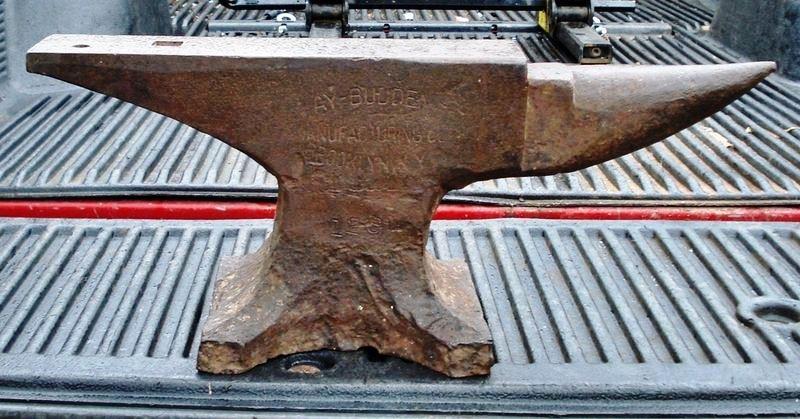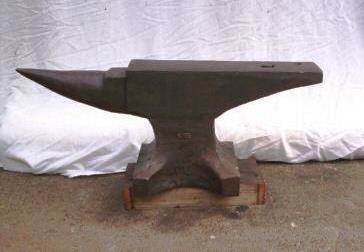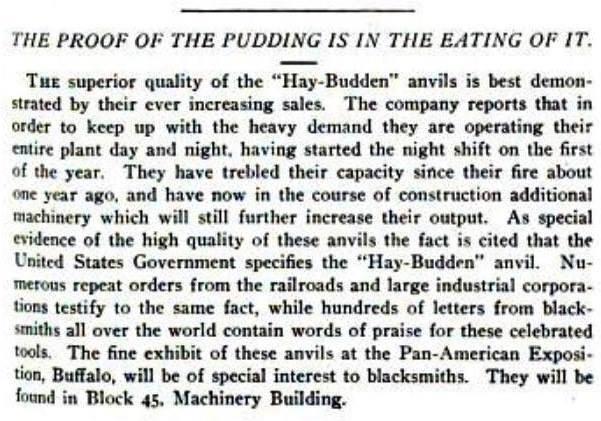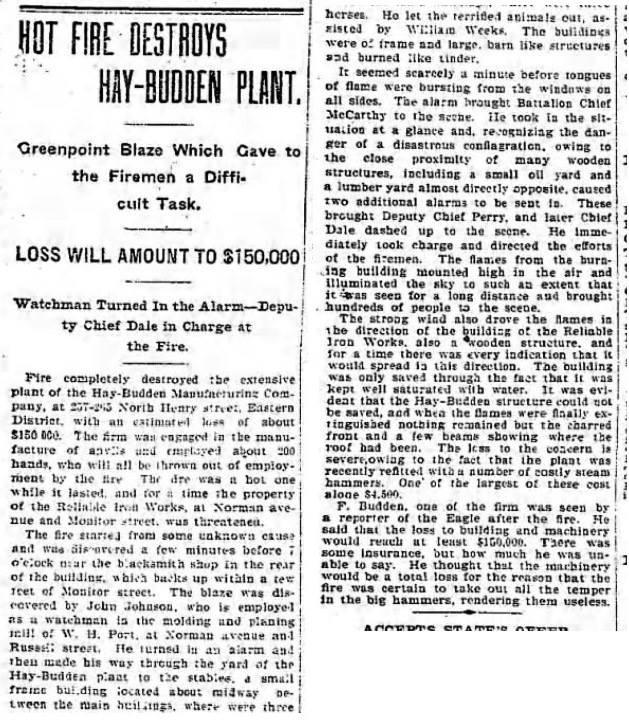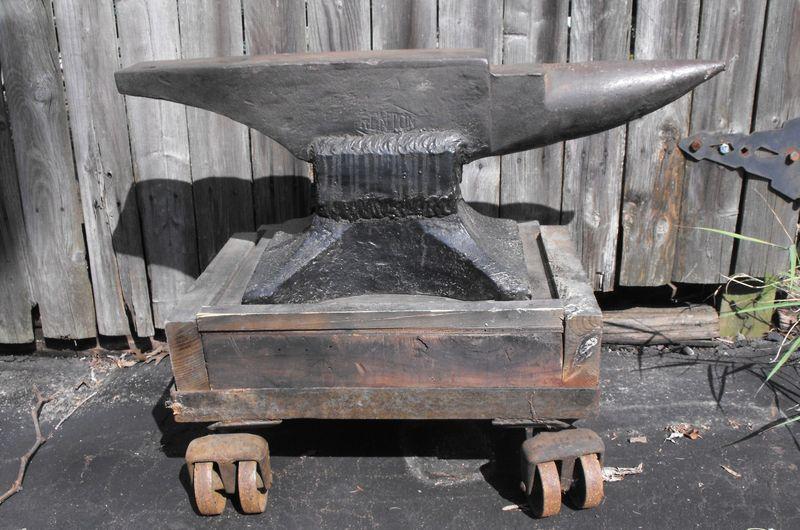-
Posts
118 -
Joined
-
Last visited
Content Type
Profiles
Forums
Articles
Gallery
Downloads
Events
Everything posted by 101 H-B
-
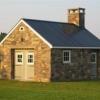
Anvil identification help
101 H-B replied to Buckwheat's topic in Anvils, Swage Blocks, and Mandrels
You have an Old English style built up anvil made by the New York City leg vise maker Joseph Goldie. He made more leg vises than anvils, but a few are around. he made anvils and vises in New York City around 1840-1850 -
The pictures you posted are a high quality forged German anvil, very possibly named Original PFP (Paul Ferdinand Peddinghaus) Definitely buy it if the price is right and you like the pattern (form/features) This is not one of the newer ones where the quality is questionable. It is drop forged in two pieces and welded at the waist, which dies not compromise the quality. Anything around $500 is a fair price.
-
You are correct, it's an AMERICAN anvil made by the American Wrought Anvil Co., Brooklyn, NY around 1900, give or take. A very good usable anvil. It looks like yours is one of them that is also marked Dunn & Murcott, Brooklyn, NY (below the name American) You might want to wire wheel it, would look great and the name will come out more clearly.
-

Still Scratching My Head....Anvil ID
101 H-B replied to WOLFJOHN's topic in Anvils, Swage Blocks, and Mandrels
https://www.facebook.com/groups/654532281280478/permalink/1133810346686000/ -

Still Scratching My Head....Anvil ID
101 H-B replied to WOLFJOHN's topic in Anvils, Swage Blocks, and Mandrels
You have a Samson anvil -
American was in business from about 1888-1912, they were an independent company not related to Hay-Budden. Hay-Budden did stamp many hardware company names on anvils for customers but didn't make any stamped American.
-

Help Identifying Large Anvil
101 H-B replied to Ser Menalak's topic in Anvils, Swage Blocks, and Mandrels
I see something on the right and left at the waist, circled, where a weight number might be. Not sure, but maybe.- 11 replies
-
- help
- identifying
-
(and 2 more)
Tagged with:
-

Help Identifying Large Anvil
101 H-B replied to Ser Menalak's topic in Anvils, Swage Blocks, and Mandrels
Yes, looks like a PW, a bit of the weight numbers are still visible on the side with the horn facing right. The serial number on the left front foot looks to have been stamped by Hay-Budden, it's their font and size. Most likely repaired by them, they put their serial number on repairs. In that case the repair was done around 1901 per AIA.- 11 replies
-
- help
- identifying
-
(and 2 more)
Tagged with:
-

Advice on a used "American" (?) anvil
101 H-B replied to J_B's topic in Anvils, Swage Blocks, and Mandrels
Late to this thread, but it definitely looks like an American brand anvil. -
-
Here's how I mounted a similar firepot on a side draft forge using 1/2 and full height firebrick within a metal top/tray, could also be done on a metal base. Drawings included, wish you success!
-
1910 per Postman's Hay-Budden chart in Anvils in America
-

A different Hay-Budden
101 H-B replied to Norm Henderson's topic in Anvils, Swage Blocks, and Mandrels
Randy, I'm not aware of any purpose for the leaning profile, and haven't seen any explanation. None of Hay-Budden's advertising illustrations I've seen show a leaning profile. I always took it as a little off the intended form, one of the results of the rising cost of labor or possibly less experienced workers. I think I've seen another thread about a leaning H-B on IFI before, but couldn't locate it. I found a couple images, but I know I've seen more. We see a lot of anomalies in forged anvils even from the most reliable companies. One of the things I like most about forged anvils is that they're all one of a kind. -

A different Hay-Budden
101 H-B replied to Norm Henderson's topic in Anvils, Swage Blocks, and Mandrels
After the March 3, 1900 fire that destroyed the Hay-Budden factory, they came back to ever increasing demand adding a 2nd shift and tripling output. It would not be surprising to have increased weld failures at the waist during training so many new workers. Also likely this was the period when the leaning profiles and other odd forms came out of Hay-Budden production. -

A different Hay-Budden
101 H-B replied to Norm Henderson's topic in Anvils, Swage Blocks, and Mandrels
I looked up Buzzkill's July 31 post, also saw Daniel S mention seeing one on South Bend CL. I suppose you can't rule anything out, Hay-Budden did advertise taking custom orders of any kind. Howeve, these seems most likely they broke at the waist and the holes were a mounting or bracket method to put them back together, we've seen anvils listed like that including recently. In Norm's pictures the word BROOKLYN is cut off at the bottom of the material, suggesting there was more there originally. -

Lakeside Anvil Information
101 H-B replied to tinman1949's topic in Anvils, Swage Blocks, and Mandrels
If serial# is on Right front foot = Trenton 1923 If serial# is on Left front foot = Hay-Budden 1911 -

George Wooldridge and son
101 H-B replied to the iron dwarf's topic in Anvils, Swage Blocks, and Mandrels
I bought the business card to go with the anvil. Thanks for the lead. Cheers! -

George Wooldridge and son
101 H-B replied to the iron dwarf's topic in Anvils, Swage Blocks, and Mandrels
Great Post, ID: thanks for that wonderful business card. I have a 31 lb. Wooldridge and had no other information about it until now. -
It is my understanding that Milne anvils are/were made in Finland.
-
Pre-1850 with those triangular ends of the feet, likely 1820-1850. Agree, the cross mark is Wilkinson.
-
The anvil appears on page 189 in 'Anvils Through the Ages', the book of the late Tim Kris's collection. It was sold on ebay some time ago during the liquidation of that collection. As Thos. P. says.. English, custom. Unique.
-

High School Blacksmith Class, 1915
101 H-B replied to 2ballcain357's topic in Blacksmithing, General Discussion
Well spoken and great accomplishments, Josh. Bravo! -

Procrastination, what excuse works best for you?
101 H-B replied to Glenn's topic in Blacksmithing, General Discussion
.. "I'm semi-retired, so I take things at my own pace" .. -
Not sure if this actually is a tool or was part of something industrial that the seller is calling a cone bridge anvil. Difficult to get a sense of scale although it's described as weighing 253 lb.

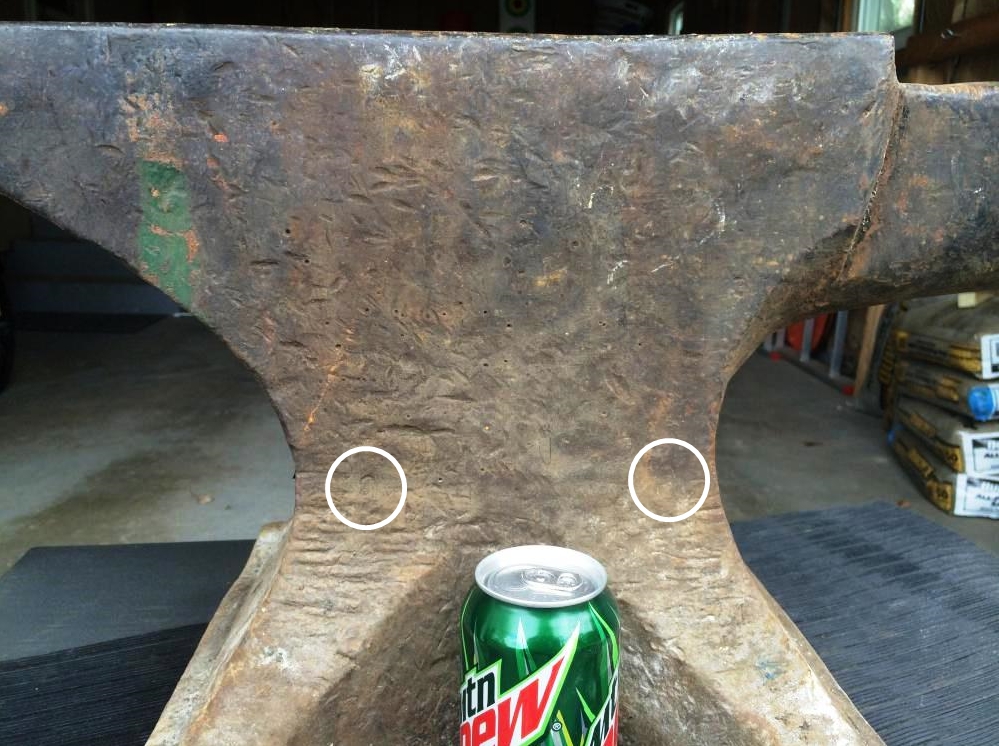
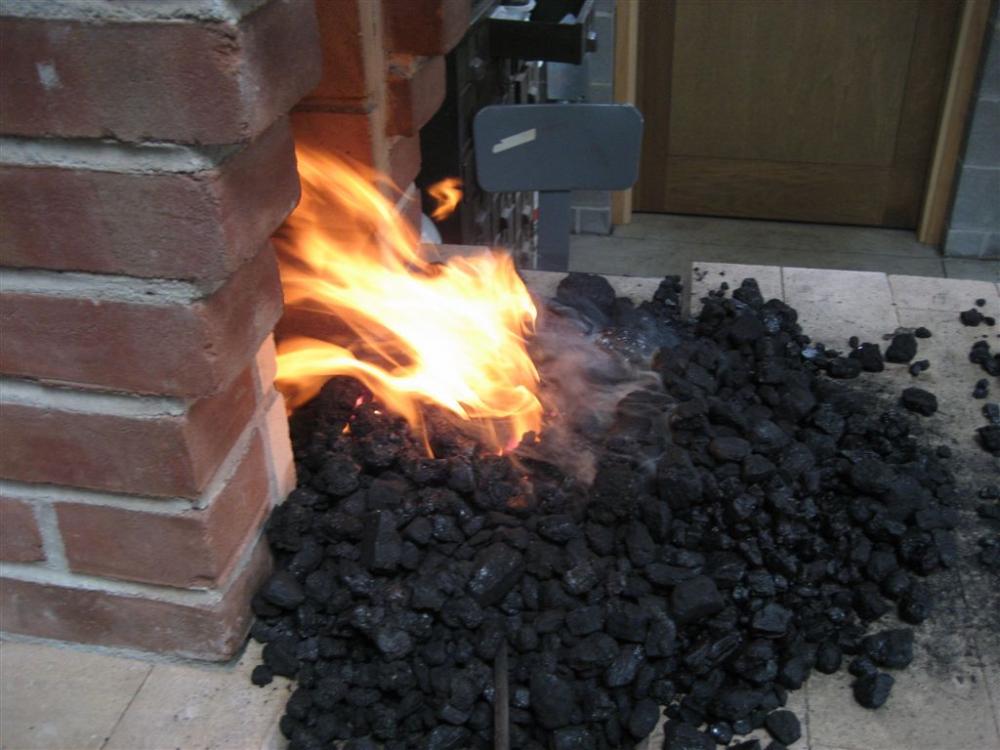
.thumb.jpg.ba3663811e111189929b8acf06c6ae36.jpg)
.thumb.jpg.c68c586ab9da4f43b3ae74909763645d.jpg)
